Your cart is currently empty!
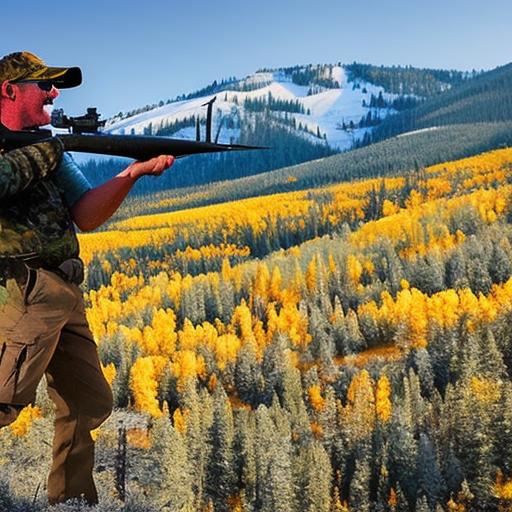
Idaho Elk Hunting: A Non-Resident’s Guide to a Thrilling Adventure

Idaho is known for its vast wilderness and abundant wildlife, making it a popular destination for elk hunting. With its diverse terrain and large elk population, Idaho offers hunters a unique and thrilling experience. Whether you are a seasoned hunter or a beginner, Idaho has something to offer for everyone.
Elk hunting in Idaho is a time-honored tradition that dates back centuries. The state is home to one of the largest elk populations in the United States, with an estimated 120,000 elk roaming its mountains and valleys. This abundance of elk makes Idaho an ideal destination for hunters looking for a challenging and rewarding experience.
Key Takeaways
- Idaho is a popular destination for elk hunting due to its large elk population and diverse terrain.
- Planning ahead is crucial for a successful elk hunting trip to Idaho, including obtaining necessary licenses and permits.
- Understanding Idaho’s hunting regulations, such as bag limits and hunting seasons, is important to avoid penalties and fines.
- Choosing the right hunting gear for Idaho’s rugged terrain, including appropriate clothing and equipment, can make a big difference in your hunting experience.
- The best times and locations for elk hunting in Idaho vary depending on the season and weather conditions, but early mornings and late afternoons are generally the most productive times.
Planning Your Elk Hunting Trip to Idaho
Planning your elk hunting trip to Idaho requires careful research and preparation. One of the first steps is to research hunting areas and obtain the necessary permits. Idaho has a variety of hunting units, each with its own regulations and restrictions. It is important to familiarize yourself with these regulations and choose a hunting unit that suits your preferences and skill level.
Choosing the right time of year for your trip is also crucial. Elk hunting seasons in Idaho typically run from August to December, with different seasons for archery, rifle, and muzzleloader hunts. The timing of your trip will depend on your preferred hunting method and the specific unit you plan to hunt in.
Finding accommodations and transportation options is another important aspect of planning your elk hunting trip. Idaho offers a range of lodging options, from rustic cabins to luxury lodges, depending on your budget and preferences. Additionally, there are several transportation options available, including rental cars, guided tours, and shuttle services.
Understanding Idaho’s Elk Hunting Regulations
Before embarking on your elk hunting adventure in Idaho, it is essential to understand the state’s hunting regulations. These regulations are in place to ensure the sustainability of the elk population and promote ethical hunting practices.
Idaho’s hunting regulations cover a wide range of topics, including bag limits, hunting seasons, weapon restrictions, and licensing requirements. It is important to familiarize yourself with these regulations and stay updated on any changes that may occur.
Some important rules and restrictions to be aware of include the requirement to wear hunter orange during certain hunting seasons, the prohibition of baiting elk, and the restriction on shooting from a vehicle or aircraft. Violating these regulations can result in fines, loss of hunting privileges, and even criminal charges.
To stay compliant with the regulations, it is recommended to read the Idaho Big Game Seasons and Rules booklet provided by the Idaho Department of Fish and Game. This booklet contains all the necessary information regarding elk hunting regulations in the state.
Choosing the Right Hunting Gear for Idaho’s Terrain
| Item | Description | Importance |
|---|---|---|
| Rifle | A firearm used for hunting | High |
| Ammunition | Bullets used in the rifle | High |
| Binoculars | Optical device used for viewing distant objects | High |
| Clothing | Appropriate attire for the weather and terrain | Medium |
| Boots | Sturdy footwear for hiking and traversing rough terrain | Medium |
| Backpack | Carrying case for gear and supplies | Medium |
| GPS | Navigation device for tracking location and waypoints | Low |
| Game Calls | Device used to mimic animal sounds to attract prey | Low |
Choosing the right hunting gear is crucial for a successful elk hunting trip in Idaho. The state’s diverse terrain and unpredictable weather conditions require hunters to be well-prepared and equipped with the appropriate gear.
Some recommended gear for hunting in Idaho includes a high-quality rifle or bow, camouflage clothing, sturdy boots, binoculars, a backpack, a GPS device, and a range finder. It is also important to bring essential survival gear such as a first aid kit, water purification tablets, and emergency food supplies.
Idaho’s terrain can be challenging, with steep mountains, dense forests, and rugged landscapes. It is important to choose gear that is durable and suitable for these conditions. Additionally, it is advisable to bring clothing layers that can be easily added or removed depending on the weather.
Finding quality hunting gear in Idaho is relatively easy, as the state is home to numerous outdoor stores and sporting goods shops. These stores offer a wide range of hunting gear from reputable brands, ensuring that hunters have access to high-quality equipment.
Best Times and Locations for Elk Hunting in Idaho
The best times and locations for elk hunting in Idaho depend on various factors, including the hunting season, the unit you plan to hunt in, and the behavior of the elk.
Generally, the early archery season in August and September is a popular time for elk hunting in Idaho. During this time, elk are still in their summer patterns and can be found in higher elevations. The late rifle season in November and December is also a good time to hunt elk, as they are more concentrated and easier to locate.
When choosing a hunting location in Idaho, it is important to consider factors such as accessibility, elk population density, and hunting pressure. Some popular hunting units in Idaho include Unit 1, Unit 27, and Unit 39. These units are known for their large elk populations and offer a variety of terrain for hunters to explore.
Scouting out potential hunting spots is an important part of the preparation process. This can be done through online research, talking to local hunters, or visiting the area before your hunt. By familiarizing yourself with the terrain and studying elk behavior, you can increase your chances of success.
Tips for Finding and Tracking Elk in Idaho
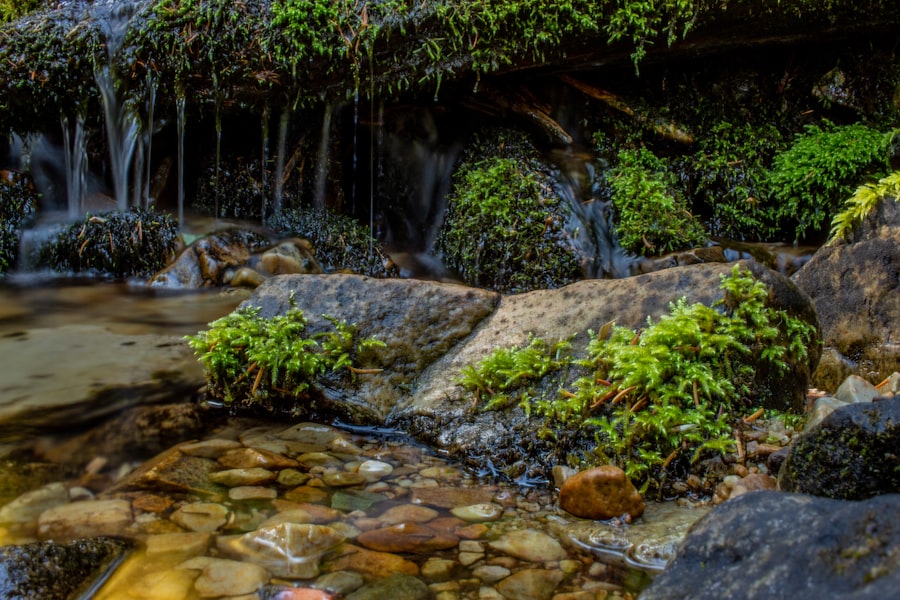
Finding and tracking elk in Idaho requires a combination of skill, patience, and knowledge of their behavior. Here are some strategies and techniques that can help you locate and track elk in the wilderness.
One effective strategy for locating elk is to listen for bugling. During the rutting season, bull elk emit a distinct bugle call to attract cows and establish dominance. By listening for bugling sounds early in the morning or late in the evening, you can pinpoint the location of elk herds.
Another technique for tracking elk is to look for signs such as tracks, droppings, rubs, and wallows. Elk tracks are easily recognizable due to their size and shape. Fresh droppings indicate recent elk activity, while rubs on trees suggest that bulls are marking their territory. Wallows are muddy depressions created by elk rolling in the dirt, often used for cooling off or attracting mates.
Understanding elk behavior and movements is also crucial for successful tracking. Elk are social animals that travel in herds, with cows and calves typically staying together while bulls form bachelor groups. They are most active during the early morning and late afternoon, and tend to bed down in thick cover during the day.
Safety Precautions for Elk Hunting in Idaho
Safety should always be a top priority when hunting in Idaho’s wilderness. Here are some important safety tips to keep in mind during your elk hunting trip.
First and foremost, it is essential to be familiar with firearm safety rules and practice proper gun handling techniques. Always treat your firearm as if it is loaded, keep your finger off the trigger until ready to shoot, and be aware of your surroundings at all times.
It is also important to wear appropriate safety gear, such as blaze orange clothing and a hunter’s orange hat. This helps other hunters identify your presence and prevents accidental shootings.
When hunting in remote areas, it is advisable to carry a survival kit that includes essentials such as a map, compass, whistle, fire starter, and emergency shelter. Additionally, make sure to inform someone of your hunting plans and expected return time.
In case of an emergency, it is important to stay calm and assess the situation. If you are injured or lost, try to stay in one place and make yourself visible to search and rescue teams. It is also recommended to carry a satellite phone or personal locator beacon for emergencies.
Hiring a Guide for Your Idaho Elk Hunting Trip
Hiring a guide for your elk hunting trip in Idaho can greatly enhance your experience and increase your chances of success. A guide can provide valuable knowledge of the area, help you navigate the terrain, and assist with field dressing and packing out your harvest.
There are several benefits to hiring a guide. First, they have extensive knowledge of the hunting area and can take you to prime hunting spots that are difficult to find on your own. They can also provide valuable insights into elk behavior and movements, increasing your chances of a successful hunt.
Finding a reputable guide in Idaho can be done through online research, referrals from other hunters, or contacting local hunting outfitters. It is important to choose a guide who is licensed, experienced, and knowledgeable about the specific unit you plan to hunt in.
When hiring a guide, it is important to discuss your expectations and goals for the hunt. This includes discussing the type of hunting method you prefer, the level of physical fitness required, and any special accommodations or dietary restrictions you may have.
Processing and Transporting Your Idaho Elk Harvest
Processing and transporting your elk harvest is an important step in ensuring that your meat remains fresh and safe for consumption. Here are some steps and tips to follow when processing and transporting your elk meat.
After harvesting an elk, it is important to field dress it as soon as possible. This involves removing the internal organs to prevent spoilage and contamination. It is recommended to wear gloves during this process to minimize the risk of bacterial contamination.
Once the elk is field dressed, it should be hung in a cool, dry place to allow the meat to age. Aging helps tenderize the meat and enhance its flavor. The ideal temperature for aging elk meat is between 34°F and 38°F.
When transporting your elk meat, it is important to keep it cool to prevent spoilage. This can be done by placing the meat in coolers with ice or frozen gel packs. It is also advisable to separate the meat into individual packages and label them with the date of harvest.
Properly storing and preserving your elk meat is crucial for maintaining its quality and safety. It is recommended to freeze the meat as soon as possible after processing. Vacuum-sealing the meat before freezing can help prevent freezer burn and extend its shelf life.
Making the Most of Your Idaho Elk Hunting Experience
Elk hunting in Idaho is not just about the harvest, but also about the experience and connection with nature. Here are some ideas for making your trip memorable and savoring the wilderness.
Take the time to appreciate the beauty of Idaho’s wilderness. Whether it’s watching a sunrise over the mountains or listening to the sounds of nature, take moments to soak in the surroundings and be present in the moment.
Keep a journal or take photographs to document your hunting experience. This allows you to relive the memories and share them with others. It can also serve as a valuable resource for future hunts.
Consider giving back to the environment by participating in conservation efforts or volunteering with local wildlife organizations. This helps ensure the preservation of Idaho’s elk population for future generations.
Lastly, share your hunting experience with others. Whether it’s through storytelling, sharing photos on social media, or mentoring new hunters, sharing your passion for elk hunting can inspire others and foster a sense of community.
In conclusion, elk hunting in Idaho offers hunters a unique and thrilling experience. By carefully planning your trip, understanding the regulations, choosing the right gear, and practicing safety precautions, you can make the most of your elk hunting adventure in Idaho. Remember to savor the experience, appreciate the wilderness, and share your passion with others. Happy hunting!
If you’re a non-resident looking to go elk hunting in Idaho, you may also be interested in learning how to hunt jackrabbits in California. Jackrabbit hunting can be an exciting and challenging experience, and this article from Old Oak Syndicate provides valuable tips and techniques for a successful hunt. From choosing the right firearm to understanding the behavior of jackrabbits, this article covers everything you need to know. So, before you head out on your Idaho elk hunting adventure, make sure to check out this informative guide on hunting jackrabbits in California. Read more
FAQs
What is Idaho elk hunting non resident?
Idaho elk hunting non resident refers to the hunting of elk in the state of Idaho by individuals who are not residents of the state.
What are the requirements for non-residents to hunt elk in Idaho?
Non-residents who wish to hunt elk in Idaho must possess a valid hunting license and a non-resident elk tag. They must also comply with all hunting regulations and laws in the state.
How much does it cost for non-residents to hunt elk in Idaho?
The cost of a non-resident elk tag in Idaho varies depending on the type of tag and the hunting zone. Generally, the cost ranges from $416 to $651.
When is the elk hunting season in Idaho for non-residents?
The elk hunting season in Idaho for non-residents typically runs from late August to early December, depending on the hunting zone and the type of tag.
What are the hunting regulations for non-residents in Idaho?
Non-residents must comply with all hunting regulations and laws in Idaho, including bag limits, hunting hours, and weapon restrictions. They must also obtain any necessary permits or licenses and follow all safety guidelines.
What is the success rate for non-resident elk hunting in Idaho?
The success rate for non-resident elk hunting in Idaho varies depending on the hunting zone and the hunting season. Generally, the success rate is around 20-30%.
What are the best hunting zones for non-resident elk hunting in Idaho?
The best hunting zones for non-resident elk hunting in Idaho are typically in the central and northern parts of the state, including the Sawtooth, Salmon, and Clearwater regions. However, the availability of tags and hunting success rates can vary from year to year.

Herb has been a longtime lover of the outdoors. Whether it be hunting, camping, fishing or just getting outside to reset. Proud father and animal lover. Bourbon anyone?

by
Tags:
Comments

Categories
- Big Game Hunting (301)
- Deer (202)
- Reviews (3)
- Shooting (16)
- Slingshot (1)
- Small Game Hunting (42)
- Upland Hunting (126)
- Waterfowl Hunting (3)

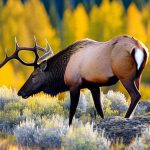

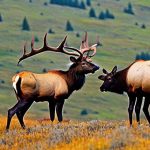
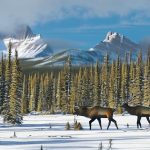
Leave a Reply